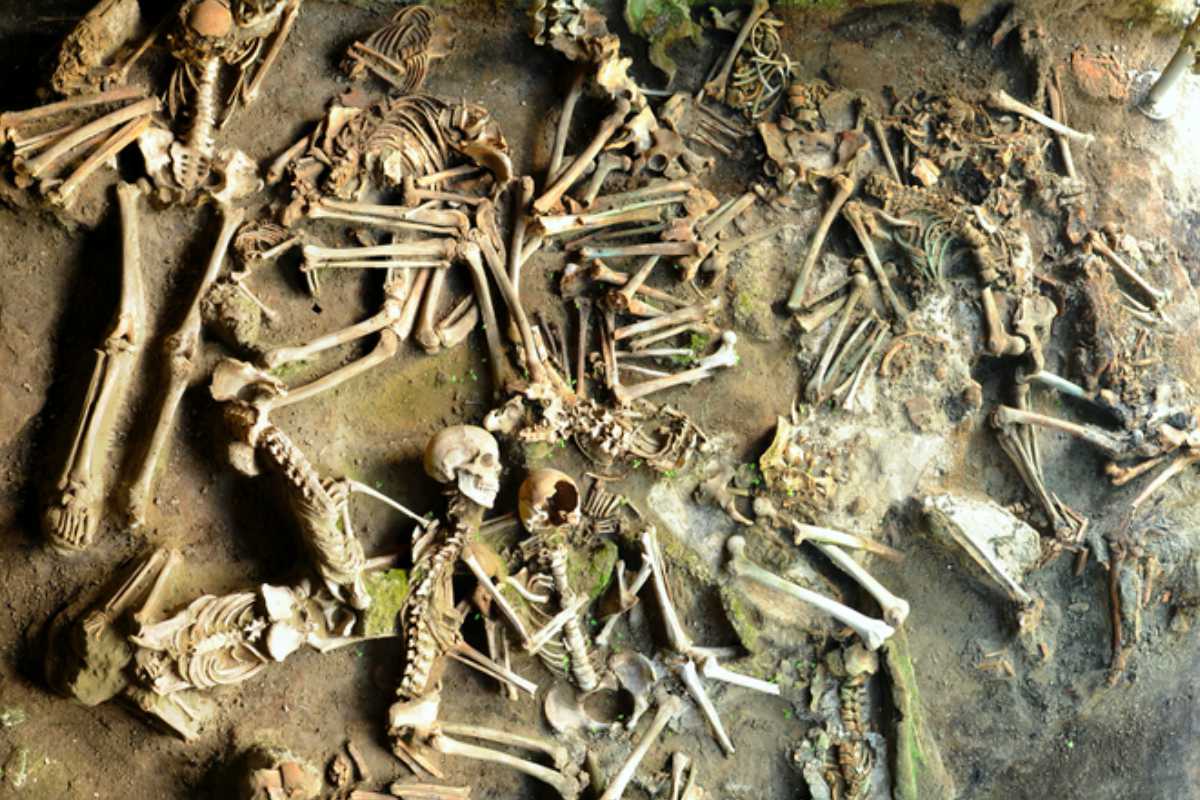
This is evident from an analysis of the bones of 17 Romans who were killed in AD 79 by the infamous eruption of Mount Vesuvius.
Pompeii is a world-famous archaeological site that seems to have virtually stood still since the catastrophic eruption of Vesuvius in AD 79, providing unique insights into the daily life of the Romans at the time. Less well-known is the nearby Herculaneum, which was also covered by ash and lava in AD 79 and in which many interesting finds were later made.
Victims on the coast
Wherever numerous victims have been found in Pompeii, the streets and houses of Herculaneum were deserted; apparently most residents had enough time to flee their homes after the volcanic eruption. But not everyone managed to escape that; more than 300 people who took refuge in boathouses on the coast still died, probably from the extreme heat of the pyroclastic flow. Their skeletons have been discovered in recent decades. And an analysis of some of these skeletons now provides a unique insight into the surprising diet of the inhabitants of Herculaneum. For example, an analysis of the bones shows that men in Herculaneum had a different diet than women. That can be read in the magazine Science Advances.
Results
The research shows that the men ate much more fish and grain than women. The women, on the other hand, obtained more proteins from animal products and locally grown fruit and vegetables. According to the researchers, it indicates that the gender of inhabitants of Herculaneum largely determined what foods they had access to.
The research
The researchers base their conclusions on an analysis of the skeletons of 17 adults that were thus found along the coast of Herculaneum. Using carbon and nitrogen isotopes in the amino acids in the bones, the researchers were able to reconstruct the diet of these people quite accurately. “Carbon and nitrogen isotopes are absorbed into our body from food,” explains researcher Silvia Soncin. Because the isotope values of animal food, for example, are slightly different from vegetable food, these isotopes can provide more insight into a person’s diet. And not only shortly after he has eaten, but also long after. Because once absorbed into the body, these isotopes are used to build the organic molecules that make up our body. “Including amino acids; building blocks that underlie proteins, such as collagen that we can extract from skeletons found at archaeological sites. Each amino acid (in that collagen, ed.) can tell you something about specific aspects of a diet.”
Fish, meat and grains
And in this case, the ratios of isotopes in the amino acids reveal that the Herculaneum men had a different diet than the women. “We knew from previous research that men in Herculaneum ate more fish than women, but we didn’t know exactly how much more,” Soncin says. That has now changed. The isotopes show that men got on average 50 percent more of the necessary proteins from fish than the women. The research also yields another surprise. “We had no idea that there would also be a difference in the consumption of grains and animal products.”
Differ
The research does not only provide more insight into the diet of the people who lived in Herculaneum. It also tells – through that diet – more about what people did and how society worked. Because, according to the researchers, the differences in diet can be traced back to differences in the activities and status of men and women. “Men were more likely to be directly involved in fishing and other maritime activities, also generally held privileged positions in society and were freed as slaves at a younger age, which also gave them more access to more expensive foods, such as fresh fish, ” says Soncin.
With the help of modern technologies, the remains of the unfortunate inhabitants of Herculaneum may in the future tell us much more about life in the early decades AD. “There is so much we can do with bones!” says Soncin. “Other isotopes (such as strontium and oxygen isotopes) can be used to visualize migration patterns. And by simply looking at the bones, we can learn more about how an individual died, whether it suffered from a disease that affected the bones, and sometimes we can even speculate about the occupation that someone had.” The last word has undoubtedly not yet been said about the inhabitants of Herculaneum.
Source material:
“New research shows men and women of Roman Herculaneum had different diets” – University of York
Interview with Silvia Soncin
Image at the top of this article: Dr Luciano Fattore